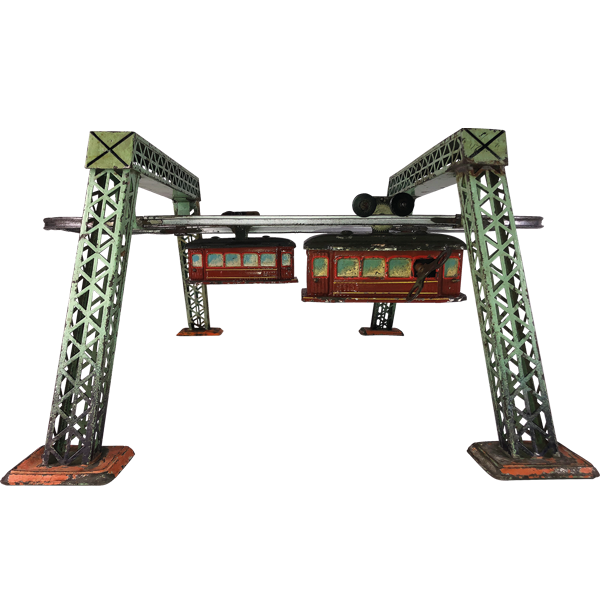
- DE
- EN
- FR


As an important means of transport, the miniature of the Wuppertal suspension railway could not be missing in the children's homes of the middle classes.
The prototype travelled over a distance of more than 13 kilometers to around 20 stations and is a unique monument to industrial history. It transported over 1.5 billion people in the last 120 years.
But why do you see an elephant on the suspension railway? Because here, too, reality was the model for the game world.
Around 1950, a circus made a guest appearance in Wuppertal. The Indian elephant Tuffi had the dubious pleasure of taking a publicity ride on the suspension railway together with some journalists. But she decided against the ride, broke through the side wall and jumped 10 meters into the Wupper. Fortunately, she did not sustain any injuries. Since then, the elephant has been part of the Wuppertal suspension railway, also in the children's room.
20 years earlier, in 1930, George Bennie tested a propeller-driven suspension railway near Glasgow. As Bennie's Railplane, it also moved into children's rooms a short time later.
But the trains were not only used for transport, they were also developed for pure fun. The first roller coasters were built, at that time still made of wood. The first roller coasters with a closed track were built from 1880 onwards as simple ovals. These were followed by roller coasters that could run an 8, which gave rise to the German word "roller coaster". The oldest roller coaster still in operation is Leap the Dips in Lakemont Park in Altoona. It dates back to 1902.
You guessed it and you can see it in front of you: Bing also offered a roller coaster as a working model, even in two sizes. It could be powered by a steam engine.